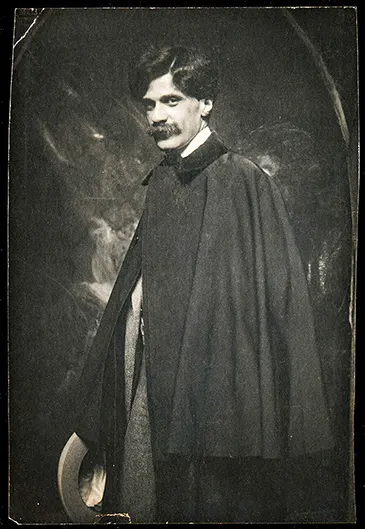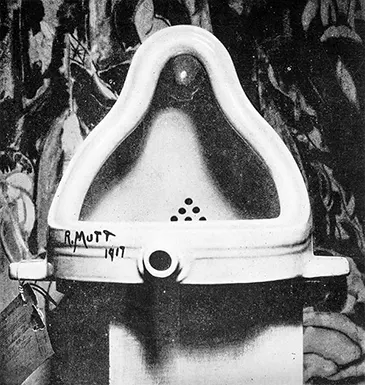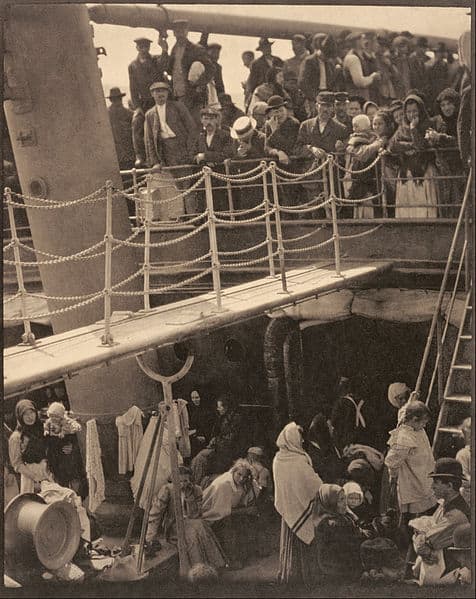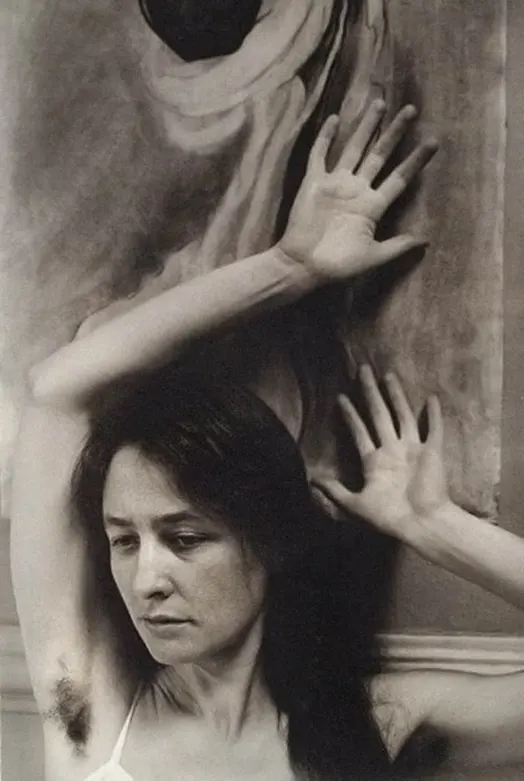Introduction: The Luminary of Modern Photography
In the vast tapestry of art history, few figures shine as brightly as Alfred Stieglitz. A beacon in the world of photography, Stieglitz was not just a master behind the lens but also a visionary who redefined the very essence of the medium. His passion, innovation, and relentless pursuit of artistic excellence transformed photography from a mere mechanical process to an expressive art form, worthy of standing shoulder to shoulder with traditional arts like painting and sculpture.
Born in the late 19th century, Stieglitz’s journey spanned pivotal moments in art and history. From the gas-lit streets of New York to the avant-garde art circles of Europe, his experiences were as diverse as the photographs he captured. But who was Alfred Stieglitz? What drove him to challenge the status quo and champion photography as a legitimate art form? This article delves deep into the life, works, and indelible legacy of the man often hailed as the “Father of Modern Photography.”
As we embark on this exploration, we’ll uncover the stories, influences, and innovations that made Stieglitz a legend in his own right. From his early days experimenting with the camera to his later years advocating for modern art, every chapter of his life offers insights into the evolution of photography and its place in the world of art. Join us as we journey through the captivating world of Alfred Stieglitz, a luminary whose impact resonates to this day.

Early Life and Formative Years
Birth and Background
Alfred Stieglitz was born on January 1, 1864, in the bustling city of Hoboken, New Jersey. The first son of German Jewish immigrants, Edward Stieglitz and Hedwig Ann Werner, Alfred grew up in a household that valued education and cultural enrichment. The Stieglitz family, prosperous and forward-thinking, provided a nurturing environment where young Alfred’s curiosity and creativity were encouraged.
European Influence
At the age of 17, Stieglitz’s life took a transformative turn when his family decided to move to Europe. While the initial intent was to provide their children with a superior education, for Alfred, Europe became a canvas of inspiration. He enrolled in the Technische Hochschule in Berlin to study mechanical engineering. However, destiny had other plans. It was during a chemistry class in Berlin that Stieglitz was introduced to the mesmerizing world of photography. The intricate chemical processes, the magic of capturing moments, and the artistry involved resonated deeply with him.
Armed with his first camera, a gift from his father, Stieglitz began exploring Europe through its landscapes, architecture, and people. From the German countryside to the streets of Paris, his travels became a photographic expedition. It was during these formative years in Europe that Stieglitz honed his skills, developed his unique style, and began to view photography not just as a hobby, but as a profound form of artistic expression.
Pictorialist Beginnings of Alfred Stieglitz
Returning to the United States in the late 1880s, Stieglitz found himself amidst an art scene that was still skeptical of photography’s artistic potential. Undeterred, he became an active participant in the Pictorialist movement, a style of photography that emphasized beauty, tonality, and composition over stark realism. Pictorialism was more than just a style for Stieglitz; it was a statement. Through soft focus, innovative techniques, and atmospheric effects, he and fellow Pictorialists aimed to showcase that photographs could evoke emotions, tell stories, and stand as artworks in their own right.
Stieglitz’s early works, characterized by their dreamy quality and painterly approach, were a testament to his belief in the artistic potential of photography. His dedication to the Pictorialist cause was further solidified when he joined the Camera Club of New York, an institution that would play a pivotal role in his journey to elevate photography to the realm of fine art.

Revolutionizing Photography: Stieglitz’s Contributions
The Photo-Secession Movement
At the turn of the 20th century, Alfred Stieglitz spearheaded the Photo-Secession movement, a groundbreaking initiative that sought to establish photography as a legitimate art form. Distancing from the prevailing notion of photography as mere documentation, the Photo-Secessionists aimed to highlight the medium’s artistic potential. Under Stieglitz’s leadership, the movement championed the idea that photographers, like painters and sculptors, could express their personal vision and creativity through their work.
Camera Work: A Legacy in Print
In his quest to promote the artistic merits of photography, Stieglitz launched “Camera Work” in 1903. This magazine, which ran for over a decade, was more than just a publication; it was a manifesto. Through its pages, Stieglitz showcased not only the best of Pictorialist photography but also introduced readers to modern European art movements. With its high-quality reproductions, insightful articles, and avant-garde aesthetics, “Camera Work” became the premier journal for photography and modern art enthusiasts. It played a pivotal role in shaping public perception, turning the tide in favor of photography as an art form.
The Iconic ‘291’ Gallery
In 1905, Stieglitz, along with fellow artist Edward Steichen, opened the doors to the “Little Galleries of the Photo-Secession,” commonly known as the “291” gallery, named after its location on Fifth Avenue in New York. This space was more than just a gallery; it was a melting pot of ideas, innovations, and artistic expressions. While it began as a platform for showcasing photographic works, “291” soon evolved, featuring modern art pieces, sculptures, and avant-garde exhibitions. Artists from various backgrounds and disciplines found a home at “291,” making it a hub for the modern art movement in America.
Through the gallery, Stieglitz introduced Americans to European modernists, bridging the gap between continents and artistic styles. The gallery’s exhibitions, often curated by Stieglitz himself, were instrumental in challenging conventional art norms and pushing boundaries.
In essence, through the Photo-Secession movement, “Camera Work,” and the “291” gallery, Alfred Stieglitz revolutionized the landscape of American art and photography. His contributions went beyond mere exhibitions and publications; he reshaped the narrative, championing the cause of photography and modern art with unwavering passion and vision.
Artistic Collaborations and Influences
Prominent Collaborations of Alfred Stieglitz
Alfred Stieglitz’s journey in the world of art was marked by significant collaborations that shaped both his work and the broader art landscape. One of the most profound relationships in his life was with the celebrated artist Georgia O’Keeffe. Their bond, transcending the realms of the personal and professional, blossomed into one of the art world’s most iconic partnerships. Through his lens, Stieglitz captured O’Keeffe in a series of intimate portraits, revealing a depth of connection and mutual admiration that remains unparalleled.
But O’Keeffe was just one of the many artists Stieglitz collaborated with. His circle was a veritable who’s who of the avant-garde art scene. Figures like Marsden Hartley, with his evocative modernist paintings, found a mentor and advocate in Stieglitz. Their shared vision and mutual respect were evident in their works and correspondence. Similarly, Paul Strand, inspired by Stieglitz’s transition from Pictorialism to Straight Photography, evolved under his guidance, adopting a more modernist approach to his craft.
European Art Meets America
Stieglitz’s influence wasn’t confined to the American art scene. He played a pivotal role in bridging the gap between American audiences and European modern art. His “291” gallery, while starting as a space for photography, soon became a beacon for European modernism. Stieglitz showcased the works of European maestros like Pablo Picasso, Auguste Rodin, and Henri Matisse, offering many Americans their first glimpse into European avant-garde art.
This wasn’t just about exhibitions. Stieglitz engaged deeply with these European artists, fostering dialogues that enriched both sides. Through these interactions, he not only introduced America to European modernism but also provided a platform for mutual exchange, ensuring that art transcended borders and boundaries.
Stieglitz’s collaborations and influences were instrumental in shaping the trajectory of modern art in America. By building bridges between artists, movements, and continents, he created a rich tapestry of artistic exchange that continues to inspire and influence even today.
Capturing Controversy: Alfred Stieglitz’s Lens on Duchamp’s “Fountain”

Marcel Duchamp’s “Fountain,” a porcelain urinal signed “R. Mutt” from 1917, was a provocative piece challenging traditional art norms. After it was removed from an exhibition by the Society of Independent Artists, Alfred Stieglitz photographed it at his 291 art gallery. The photograph featured the urinal set against Marsden Hartley’s painting “The Warriors.” Stieglitz’s image not only documented Duchamp’s controversial work but also played a pivotal role in promoting its significance in the art world. In a 1917 letter, Stieglitz expressed admiration for the photograph, noting its unique and beautiful appearance.
Stieglitz’s Photographic Techniques and Beliefs
From Pictorialism to Straight Photography
Alfred Stieglitz’s photographic journey was marked by evolution and transformation. Initially drawn to the Pictorialist movement, he championed the idea of creating images that resembled paintings, emphasizing mood, tonality, and beauty. However, as the years progressed, Stieglitz began to see the unique potential of photography to capture reality without the need for manipulation. This realization led him to embrace Straight Photography, a style that prioritized sharp focus, clarity, and capturing scenes as they naturally appeared. This shift was not just a change in technique but represented a deeper philosophical transition about the role and purpose of photography.
Techniques and Innovations
Stieglitz was a master of experimentation, constantly pushing the boundaries of what was possible with a camera. One of his signature techniques involved capturing scenes in challenging weather conditions, such as snowfall, rain, or at night. These images, often devoid of human presence, evoked a sense of solitude and introspection. Stieglitz was also known for his close-up shots, where he would focus on a single subject, stripping away any distractions and highlighting intricate details, textures, and contrasts.
His innovative use of soft focus, layering, and light manipulation allowed him to create images that were both realistic and imbued with emotion. Whether it was the play of shadows on a face or the reflection of city lights on wet streets, Stieglitz’s techniques brought out the soul of his subjects.
Philosophical Beliefs
At the heart of Stieglitz’s work was a deep-seated belief in the power of photography as a medium of expression. He viewed the camera not just as a tool but as an extension of the artist’s vision. For Stieglitz, photography was about capturing more than just a moment; it was about conveying emotions, telling stories, and making the viewer feel something profound.
He believed that every photograph should be a reflection of the photographer’s inner world, their beliefs, and their perspectives. This philosophy was evident in his works, where each image, no matter how simple, carried a depth of meaning and purpose. Stieglitz often remarked that in every photograph he took, a part of him was embedded, making his entire body of work a deeply personal and introspective journey.
In essence, Alfred Stieglitz’s techniques and beliefs were intertwined, each feeding into the other. His innovative approaches to photography were rooted in his philosophical convictions, making him not just a master of the craft but also a thinker who reshaped the very essence of photographic art.
Notable Works of Stieglitz and Their Impact
The Steerage: A Masterpiece

Among the myriad of photographs captured by Stieglitz, “The Steerage” stands out as a defining piece. Taken in 1907 during a voyage to Europe, this image captures a scene aboard a ship, with passengers crowded in the steerage section. At first glance, it might seem like a simple snapshot of travelers, but a deeper look reveals a complex interplay of shapes, lines, and contrasts. The juxtaposition of the well-dressed passengers above with those in the cramped quarters below offers a poignant commentary on class divisions and the human condition.
“The Steerage” is often hailed as one of the first modernist photographs, breaking away from the Pictorialist style that dominated the era. Its significance lies not just in its composition but in its ability to evoke emotion and provoke thought. For Stieglitz, this photograph was a turning point, marking his transition from Pictorialism to a more direct, unembellished style of photography.
Series and Portraits

Stieglitz’s oeuvre is marked by several series of photographs, each delving deep into a subject or theme. One of the most notable is his series of portraits of Georgia O’Keeffe. Spanning several years, these images capture O’Keeffe in various settings, moods, and stages of life. More than just portraits, they are a testament to the deep bond and understanding between the artist and the muse. Through these images, Stieglitz not only showcased O’Keeffe’s physical beauty but also delved into her soul, capturing her essence in a way that few artists could.
Beyond O’Keeffe, Stieglitz’s lens captured many prominent figures of his time, from artists and writers to everyday individuals. Each portrait, whether of a famous personality or an unknown face, carried Stieglitz’s signature touch, revealing layers of emotion and depth.
Stieglitz’s notable works, be it standalone images like “The Steerage” or extensive series like the portraits of O’Keeffe, have left an indelible mark on the world of photography. They are not just photographs but narratives, each telling a story, evoking emotions, and offering insights into the human psyche. Through these works, Stieglitz showcased the power of photography as an art form, capable of capturing the complexities of life in all its shades.
Fun Facts and Lesser-Known Details
Personal Anecdotes
Alfred Stieglitz, while renowned for his contributions to photography and art, was also a man of intriguing personal tales. One such story revolves around his persistent efforts to photograph clouds, a project he titled “Equivalents.” Stieglitz believed that clouds could convey emotions, much like music does. He would often be seen, camera in hand, gazing at the sky, waiting for the perfect alignment of clouds to capture his mood. These abstract cloud studies became a significant part of his later works, showcasing his belief in photography’s ability to represent emotions.
Another delightful tidbit from Stieglitz’s life is his initial disdain for color photography. He once quipped that color in photography was as unnecessary as “lips on a woodpecker.” However, with time and exposure to evolving techniques, Stieglitz warmed up to the idea, acknowledging its potential in the realm of artistic expression.
Awards and Recognitions
While Stieglitz’s contributions to art and photography are well-documented, few know about the numerous accolades he received during his lifetime. He was awarded the prestigious “Progress Medal” by the Royal Photographic Society of Great Britain in 1943, a testament to his pioneering work in the field.
Additionally, Stieglitz was known for his generosity, often buying artworks from struggling artists, not as a collector but to support their endeavors. This benevolence made him a beloved figure in the art community, with many artists, including the likes of Pablo Picasso, offering him their works as tokens of appreciation.
Stieglitz’s life, beyond his monumental contributions to photography, was filled with fascinating stories, quirks, and gestures that made him a multifaceted personality. These lesser-known details not only offer a glimpse into the man behind the camera but also paint a vivid picture of a passionate artist, mentor, and advocate, whose legacy extends beyond his photographs.
Legacy and Impact of Alfred Stieglitz on Modern Photography
Elevating Photography to Fine Art
Alfred Stieglitz’s most enduring legacy is undoubtedly his relentless advocacy for photography as a legitimate form of fine art. At a time when photography was largely seen as a mechanical process, Stieglitz championed its artistic potential. Through his exhibitions, publications, and personal works, he showcased the medium’s capacity to evoke emotions, tell stories, and capture the essence of a moment. His efforts laid the groundwork for future generations of photographers, ensuring that photography was recognized and respected alongside traditional art forms like painting and sculpture.
The Birth of Modern Photography
Stieglitz’s transition from Pictorialism to Straight Photography marked a significant shift in the world of photography. By emphasizing clarity, sharp focus, and capturing scenes in their natural state, Stieglitz and his contemporaries ushered in the era of modern photography. This approach influenced countless photographers, steering them away from manipulated, painterly images and towards a more direct, unembellished style. Stieglitz’s belief in the camera’s ability to capture “a reality so subtle that it becomes more real than reality” became a foundational principle for modern photographic practices.
Mentorship and Nurturing Talent
Beyond his personal contributions, Stieglitz played a pivotal role in nurturing and promoting emerging talent. His 291 gallery became a haven for budding artists, offering them a platform to showcase their works and engage with the avant-garde art community. Stieglitz’s mentorship extended beyond the confines of the gallery. He engaged deeply with artists, offering guidance, feedback, and, most importantly, unwavering support. Many artists, including Georgia O’Keeffe, Paul Strand, and Marsden Hartley, owe a significant part of their success to Stieglitz’s mentorship.
A Lasting Influence
Even decades after his passing, Alfred Stieglitz’s influence on the world of art and photography remains undeniable. His vision, passion, and dedication have left an indelible mark, shaping the trajectory of modern photography. Contemporary photographers, art historians, and enthusiasts continue to study and draw inspiration from his works, ensuring that Stieglitz’s legacy lives on. His contributions serve as a testament to the transformative power of art and the enduring impact of a visionary.
The Final Years and Stieglitz’s Enduring Spirit
Later Life and Continued Passion
As Alfred Stieglitz entered the twilight years of his life, his passion for art and photography remained undiminished. While he faced health challenges, his commitment to promoting modern art and nurturing young talent never wavered. He continued to run his galleries, albeit with some assistance, ensuring they remained hubs for avant-garde art and photography.
Personal Reflections and Intimate Works
In his later years, Stieglitz’s work took a more introspective turn. He began focusing more on personal subjects, capturing intimate moments and reflections. His series of portraits of Georgia O’Keeffe, taken during this period, are particularly poignant, revealing a deep emotional connection and mutual understanding between the artist and his muse.
Passing and Immediate Legacy
Alfred Stieglitz passed away on July 13, 1946, at the age of 82. His death marked the end of an era, but his legacy was far from over. Immediately after his passing, tributes poured in from artists, photographers, and critics worldwide, acknowledging his monumental contributions to the world of art. His galleries, particularly the 291, became places of homage, with many visiting to pay their respects and reflect on his impact.
Stieglitz’s Eternal Flame
Today, decades after his passing, Alfred Stieglitz’s spirit continues to illuminate the world of art and photography. His vision, beliefs, and innovations have become foundational principles for countless artists. Institutions, museums, and galleries worldwide celebrate his works, ensuring that new generations of art enthusiasts discover and draw inspiration from his contributions. In essence, while Stieglitz may have left the physical realm, his spirit, passion, and legacy remain eternal, continuing to inspire, challenge, and elevate the world of art.
Conclusion: Alfred Stieglitz – A Beacon of Photographic Artistry
In the vast tapestry of art history, few figures shine as brightly as Alfred Stieglitz. His journey, marked by innovation, advocacy, and passion, transformed the landscape of photography, elevating it from mere documentation to a profound form of artistic expression. Stieglitz wasn’t just a photographer; he was a visionary, a mentor, and a trailblazer, challenging conventions and redefining boundaries.
His unwavering belief in photography’s potential to evoke emotion, tell stories, and capture the essence of moments has left an indelible mark on the art world. Through his galleries, publications, and personal works, he not only showcased the beauty of photography but also nurtured and inspired countless artists, fostering a community that thrived on creativity and innovation.
But beyond his tangible contributions, Stieglitz’s true legacy lies in his spirit. His relentless pursuit of excellence, his commitment to mentorship, and his deep-seated belief in the transformative power of art have become guiding principles for generations of artists. Today, as we reflect on his life and works, we are reminded of the enduring impact of a single individual’s vision and passion.
In essence, Alfred Stieglitz’s legacy is a testament to the timeless power of art. His spirit, captured in every photograph he took and every artist he mentored, continues to inspire, challenge, and elevate, ensuring that the world of art remains a vibrant, dynamic, and ever-evolving realm.
Further reading and learning about Alfred Stieglitz
Curated videos about Alfred Stieglitz
Curated lecture about Alfred Stieglitz
About Camera Work
Camera Work, from the Alfred Stieglitz Collection, Art Institute Chicago
https://archive.artic.edu/stieglitz/camera-work/
Curated Papers about Alfred Stieglitz
Landscapes of the Mind: New Conceptions of Nature; The Stieglitz Circle, Kathleen Pyne, 2009.
Curated PDF about Alfred Stieglitz
The Alfred Stieglitz Collection
After the death of Stieglitz, Georgia O’Keeffe worked hard in order to distribute Stieglitz’s work among many institutions all along the United States.
One of the main places where Stieglitz photographs may be found today is The Alfred Stieglitz Collection in the Art Institute of Chicago.
O’Keeffe, who wanted Stieglitz’s work to be shown rather than stored, donated photographs to the following institutions:
Beinecke Rare Book and Manuscript Library, Yale University, New Haven, Connecticut
Carl Van Vechten Gallery, Fisk University, Nashville, Tennessee
George Eastman Museum, Rochester, New York
Library of Congress, Washington, D.C.
Metropolitan Museum of Art, New York
Museum of Modern Art, New York
National Gallery of Art, Washington, D.C.
National Museum of Modern Art, Tokyo
Thank you for such a detailed and comprehensive article!! 🙂